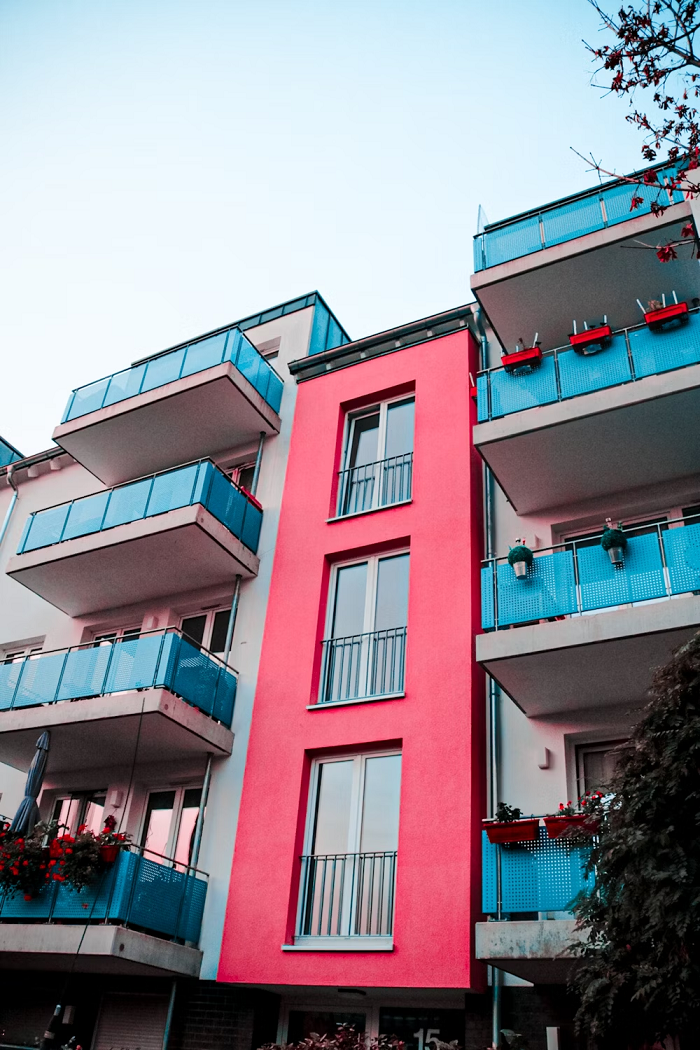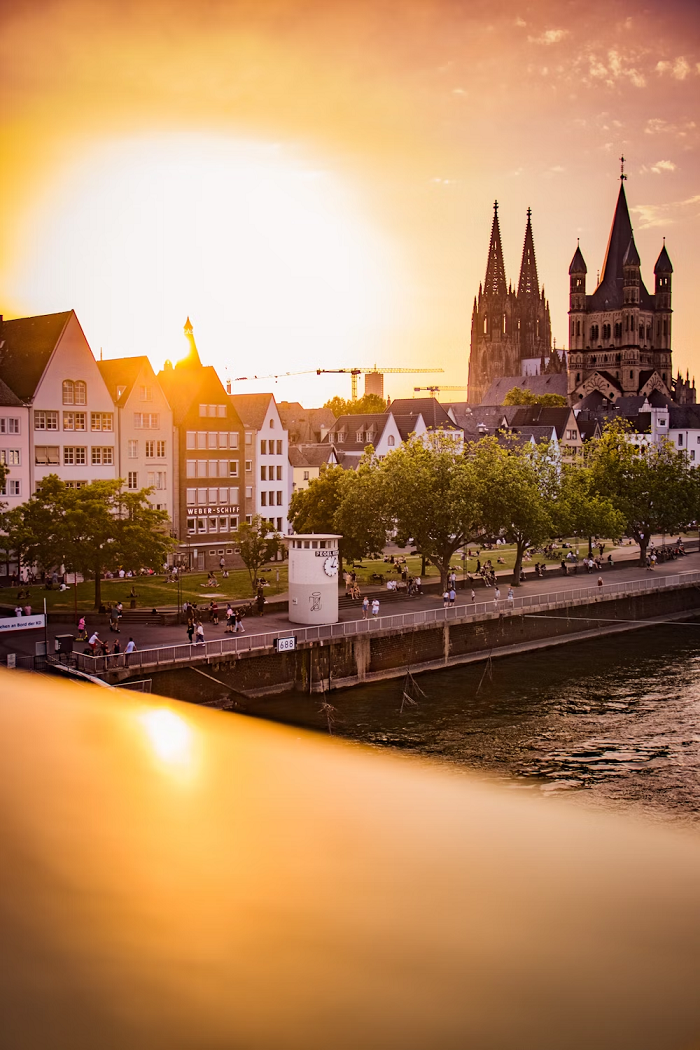Interested in real estate investing in Germany? Looking to make a sustainable impact while earning a solid return on your investment?
Green housing might just be the perfect fit for you. Sustainable real estate investments are on the rise in Germany, with a growing number of investors recognizing the long-term benefits of environmentally-friendly housing options. From energy-efficient buildings to eco-friendly materials, green housing offers a variety of opportunities for investors to make a positive impact on the environment while also generating income. In Germany, the demand for green housing is steadily increasing as more and more individuals prioritize sustainability in their living spaces. With initiatives such as the KfW Energy Efficiency Program offering financial incentives for property owners to make energy-efficient upgrades, investing in green housing can be a smart financial decision. Additionally, green buildings are known to have lower operating costs and higher resale values, making them an attractive option for investors looking for stable long-term returns. By focusing on sustainable real estate investments in Germany, investors can not only contribute to a greener future but also benefit from a growing market trend towards environmentally-conscious living.
What is Green Housing?
Green housing refers to homes and buildings that are designed and constructed with sustainability in mind. This means using environmentally friendly materials, energy-efficient technologies, and incorporating renewable energy sources. For example, green buildings may have solar panels on the roof to generate electricity or use recycled materials in their construction. These eco-friendly features not only reduce the environmental impact of the home but also lower energy costs for the homeowner. In Germany, green housing has become increasingly popular as more people seek to reduce their carbon footprint and live in a more sustainable way. Many new residential developments are now being built with green building principles in mind, such as using energy-efficient heating and cooling systems, insulating materials, and water-saving fixtures. Additionally, some older buildings are being retrofitted with green technologies to improve their energy efficiency and make them more environmentally friendly. The German government also offers incentives and subsidies for homeowners and developers who choose to invest in green housing, further driving the growth of sustainable real estate in the country.
Benefits of Green Housing
Green housing in Germany offers a plethora of benefits for both the environment and its inhabitants. One major advantage is the reduction of energy consumption, which leads to lower utility bills. Homes with energy-efficient insulation, appliances, and lighting can help homeowners save money in the long run. Additionally, green buildings are designed to utilize renewable energy sources like solar panels, making them more sustainable and less reliant on fossil fuels. Another key benefit of green housing is improved indoor air quality. These homes are built with materials that have low volatile organic compounds (VOCs), which can be harmful to human health. By choosing eco-friendly paints, flooring, and furniture, residents can enjoy a healthier living environment with reduced risks of respiratory issues or allergies. Moreover, green buildings often incorporate natural ventilation systems and green spaces, which help promote mental and physical well-being among residents.
Sustainable Real Estate Investments in Germany

When it comes to sustainable real estate investments in Germany, there are plenty of opportunities for savvy investors looking to make a positive impact on the environment. Germany is a leader in green building practices, with many innovative projects focused on energy efficiency and eco-friendly design. For example, the Vauban district in Freiburg is known for its sustainable housing initiatives, with buildings designed to reduce energy consumption and promote a high quality of life for residents. Another example is the Skyline Tower in Frankfurt, which features green technologies such as solar panels and rainwater harvesting systems to minimize its environmental impact. Investing in green housing in Germany can also lead to financial benefits, as properties with high energy efficiency ratings tend to have lower operating costs and can command higher rental or resale prices. With the growing demand for sustainable living spaces, investors can potentially see a strong return on their investment while also contributing to a more environmentally friendly real estate market. In addition, the German government offers various incentives and subsidies for green building projects, making it an attractive market for those looking to make a positive impact while also making a profit.
Government Policies and Incentives
In Germany, the government has implemented a variety of policies and incentives to promote green housing and sustainable real estate investments. For example, the KfW banking group offers low-interest loans and grants for energy-efficient renovations and new construction, making it easier and more affordable for homeowners to make eco-friendly upgrades. Additionally, the government provides tax incentives for property owners who invest in sustainable technologies like solar panels or heat pumps, encouraging more people to go green with their housing choices. These policies not only benefit the environment, but also help to lower energy costs and increase the value of real estate investments in the long run. Another way the government supports green housing in Germany is through strict building codes and regulations aimed at increasing energy efficiency and reducing carbon emissions. For instance, the EnEV (Energy Conservation Ordinance) sets standards for insulation, heating systems, and overall energy consumption in new construction and existing buildings. By enforcing these regulations, the government is able to ensure that all real estate projects meet sustainable criteria, leading to a more eco-friendly and sustainable housing market. With these policies and incentives in place, Germany has become a global leader in green housing, attracting investors and homeowners who value sustainability and environmental responsibility.
Green Building Certification
Green building certification is a way to assess the sustainability and environmental impact of a building. In Germany, one of the most recognized certification systems is the DGNB (German Sustainable Building Council) certification. This certification evaluates different aspects of a building, such as site location, energy efficiency, water consumption, and materials used in construction. By obtaining a DGNB certification, real estate investors can demonstrate their commitment to sustainable practices and attract environmentally-conscious tenants. Another popular green building certification in Germany is the LEED (Leadership in Energy and Environmental Design) certification. This certification, developed by the U.S. Green Building Council, is widely recognized internationally and evaluates buildings based on criteria such as energy efficiency, water conservation, and indoor air quality. Many real estate developers in Germany strive to achieve a LEED certification to differentiate their properties in the market and appeal to a growing number of environmentally-aware consumers. Overall, green building certification is becoming an important factor in the real estate market in Germany as investors and consumers alike prioritize sustainability and energy efficiency in their purchasing decisions.
Challenges and Solutions
When it comes to green housing investments in Germany, one of the main challenges is the high initial cost of implementing sustainable technologies and materials. For example, solar panels and energy-efficient insulation can require a significant upfront investment, which may deter some investors. However, one solution to this challenge is the availability of government incentives and subsidies for eco-friendly housing projects. In Germany, there are various financial support programs such as the KfW energy efficiency grants, which can help offset the initial costs and make green investments more financially viable for investors. Another challenge in green housing investments in Germany is the lack of standardized regulations and certifications for sustainable properties. This can make it difficult for investors to assess the environmental impact and energy efficiency of a potential green housing project. One solution to this challenge is the introduction of certification systems like the Passive House Standard, which provides a clear benchmark for energy-efficient buildings. By adhering to recognized standards and certifications, investors can ensure that their green housing investments meet the criteria for sustainability and energy efficiency, ultimately increasing the value and appeal of the property.
Impact on Environment
When it comes to the impact on the environment, green housing in Germany is making a big difference. These sustainable real estate investments are designed with energy efficiency in mind, using materials that are eco-friendly and reduce waste. For example, many green buildings in Germany are equipped with solar panels to harness the power of the sun and generate electricity. This helps to reduce carbon emissions and reliance on fossil fuels, which is a major contributor to climate change. Additionally, green housing in Germany often incorporates innovative water conservation techniques, such as rainwater harvesting systems and greywater recycling. By using these methods, buildings can reduce their water consumption and minimize the strain on local water resources. This not only helps to protect the environment, but also reduces utility costs for residents. Overall, the focus on sustainability in real estate investments in Germany is leading to a positive impact on the environment, helping to create a more eco-friendly and resilient built environment for future generations.
Conclusion
In conclusion, investing in green housing in Germany is a smart choice for those looking to make sustainable real estate investments. With the country’s strong commitment to renewable energy and environmentally friendly practices, green buildings are in high demand and offer long-term financial benefits. By incorporating energy-efficient features and sustainable design elements, such as solar panels, green roofs, and triple-glazed windows, investors can not only reduce their carbon footprint but also attract eco-conscious tenants and achieve higher rental yields. Furthermore, Germany’s strict building codes and regulations encourage developers to prioritize sustainability and energy efficiency in new construction projects. This has led to the rise of innovative green building technologies and practices that are setting new standards for environmentally friendly real estate. For example, the Passivhaus standard, which focuses on creating ultra-low energy buildings with exceptional airtightness and insulation, has gained popularity in Germany and beyond. Investing in green housing in Germany not only benefits the environment but also offers a competitive edge in the real estate market while contributing to a more sustainable future.
References
When it comes to investing in green housing in Germany, having reliable references is key. You want to make sure that the developers and builders you’re working with have a track record of creating sustainable properties that meet high environmental standards. Look for references from previous clients who can attest to the quality of the work and the commitment to eco-friendly practices. For example, you might seek out references from tenants who have lived in a green building and can speak to their energy efficiency and overall comfort. Additionally, it can be helpful to look for references from industry experts and organizations that specialize in sustainable real estate. These references can provide valuable insights into the reputation of a particular developer or builder, as well as any certifications or awards they have received for their work in the green housing sector. For instance, you might seek out references from organizations like the German Sustainable Building Council (DGNB) or the Passive House Institute, which promote sustainable building practices and can help you identify reputable players in the market. By doing your due diligence and gathering relevant references, you can make more informed decisions when it comes to investing in green housing in Germany






Оставить ответ